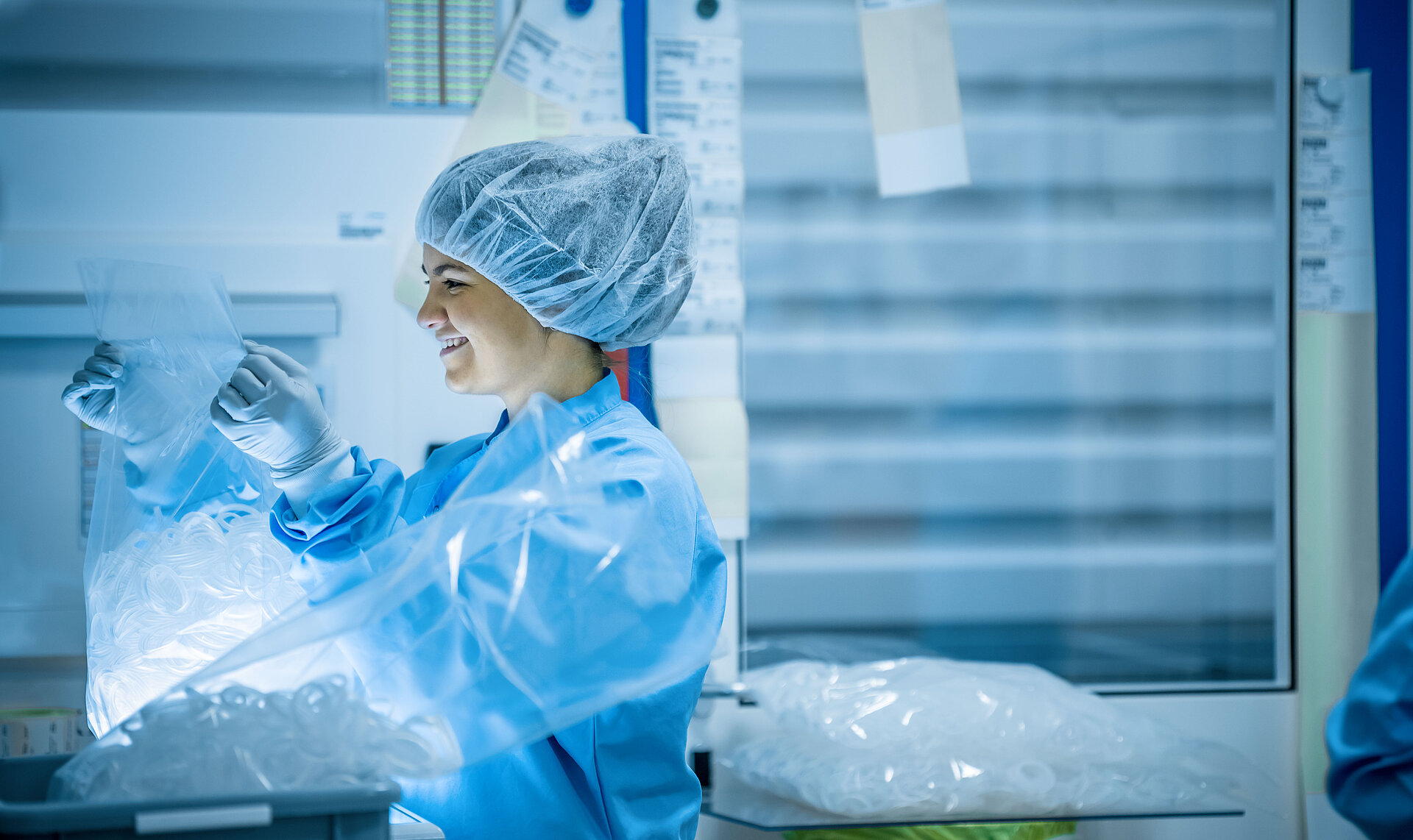The future is cold runner
It may be surprising, but pacifiers and engine seals in fact have a great deal in common. Both are made from elastomers, where processing can produce large amounts of engineered and manufactured waste. So, Freudenberg uses valve gate cold runner technology that can achieve component-dependent savings of up to 80 percent.
At its site in Gloucester, Massachusetts (USA), Freudenberg Medical produces pacifiers from liquid silicone rubber mostly for the US market. The pacifiers are manufactured using an injection molding process and – in contrast to Europe, where the guard is often made of a different material – the pacifiers are made from a single mold. From the start, Freudenberg Medical opted for sustainable valve gate cold runner technology.

Thanks to valve gate cold runner technology, we avoid roughly 25 tons of raw material loss per year compared with conventional distributor systems.
Dr. Kai Opdenwinkel, Managing Director of Freudenberg Medical Europe
Thanks to the special injection molding technology, silicone consumption is reduced by 20 to 25 percent during injection molding. For a 32 cavity tool, this means a material saving equal to the production of 32 additional products after each 5th shot. On the other side of the Atlantic, Freudenberg Medical also uses the technology to reduce CO2 emissions by a good 200 tons a year. “Thanks to valve gate cold runner technology, we avoid roughly 25 tons of raw material loss per year compared with conventional distributor systems,” says Dr. Kai Opdenwinkel, Managing Director of Freudenberg Medical Europe, summing up the savings at the Kaiserslautern site.
In Langres, France, Freudenberg Sealing Technologies produces large-volume engine seals for combustion engines. In the past, up to half the material used for manufacturing elastomer Simmerrings and O-rings had to be scrapped. To reduce such enormous quantities and significantly improve the CO2 footprint, production was recently switched to valve gate cold runner technology. It was then possible to substantially reduce the process and engineered waste for many products. Today, some of the products that used to generate the most scrap are virtually free of engineered waste, generating an impressive total material saving of about 70 tons per year. “This means we can save over 600 tonnes of CO2 every year in the manufacture of this product group alone,” says Volker Schroiff, Head of Technology Management in the Technology & Innovation department.
reduced CO2 emissions in Gloucester, Massachusetts (USA) each year
reduced CO2 emissions in Langres (France) each year
Small valve, big impact
Today, cold runner technology is the standard in silicone processing. Liquid silicone rubber solidifies at temperatures of 170° C to 200° C and, once cross-linked, cannot be melted down and reused. In conventional injection molding, the molten material is injected through a runner into the heated mold containing the product’s negative mold. As the runner lies directly against the mold, it reaches temperatures at which the silicone, which is still in the sprue at the end of the injection process, also begins to cross-link. In the process, a large amount of material has to be scrapped. Using cold runner technology, the cooled injection runner is separated from the mold by an insulating plate to avoid the loss of unused material. This prevents premature cross-linking of the silicone and considerably reduces scrap.
The valve gate makes additional significant material savings possible: After the elastomer has been injected through the runner into the mold, a valve closes the nozzle interrupting the material flow directly at the product. So there are no annoying sprue marks that need to be removed in further processing steps. This not only saves time, but also additional energy resources.
We can save over 600 tonnes of CO2 every year in the manufacture of this product group alone.
Volker Schroiff, Head of Technology Management in the Technology & Innovation department
Saving for future generations
Valve gate cold runner technology is just one of the technological competencies the company uses to keep its material and energy consumption as low as possible and make an active contribution to improving its own CO2 footprint.